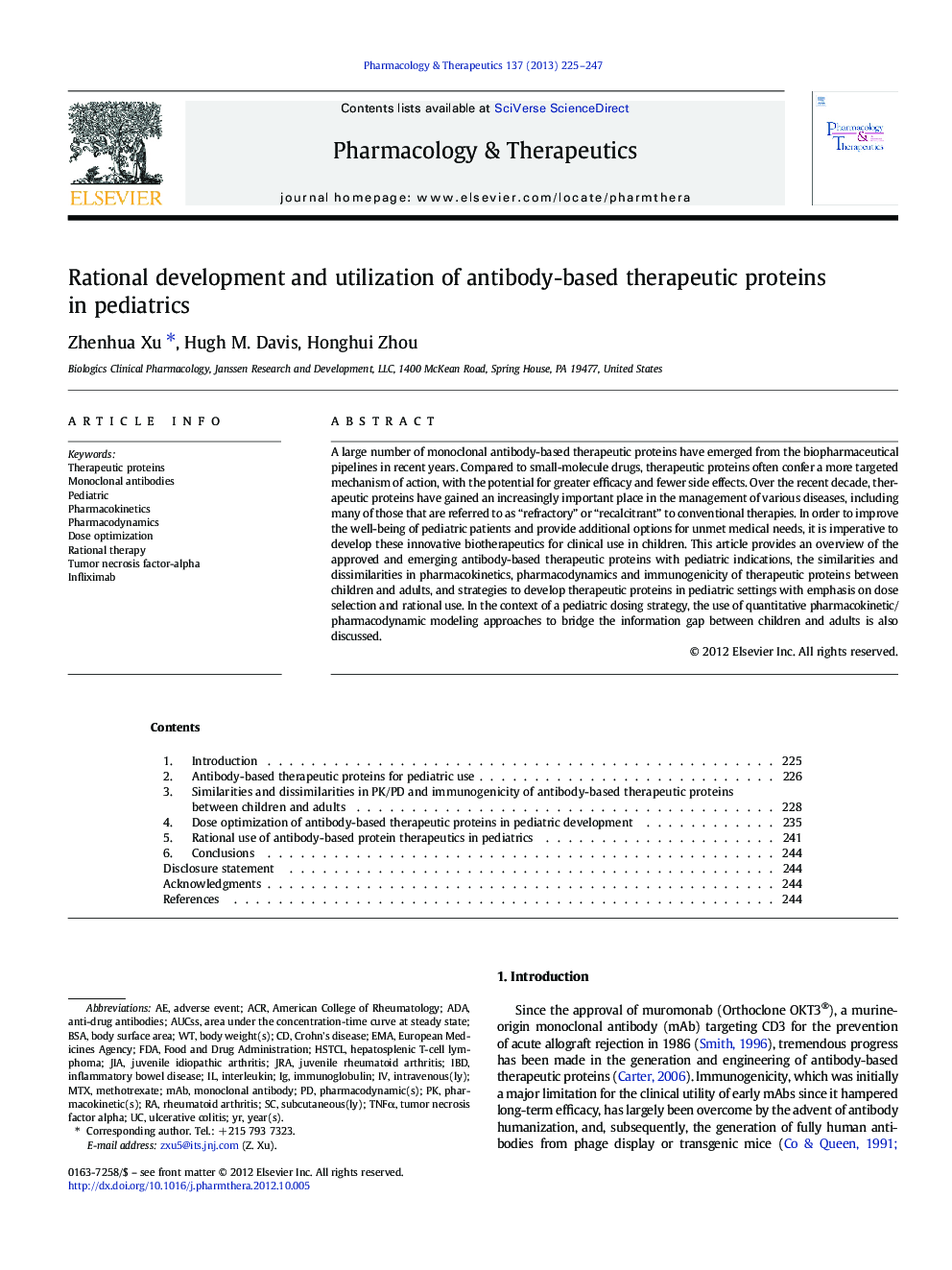| Article ID | Journal | Published Year | Pages | File Type |
|---|---|---|---|---|
| 2564022 | Pharmacology & Therapeutics | 2013 | 23 Pages |
A large number of monoclonal antibody-based therapeutic proteins have emerged from the biopharmaceutical pipelines in recent years. Compared to small-molecule drugs, therapeutic proteins often confer a more targeted mechanism of action, with the potential for greater efficacy and fewer side effects. Over the recent decade, therapeutic proteins have gained an increasingly important place in the management of various diseases, including many of those that are referred to as “refractory” or “recalcitrant” to conventional therapies. In order to improve the well-being of pediatric patients and provide additional options for unmet medical needs, it is imperative to develop these innovative biotherapeutics for clinical use in children. This article provides an overview of the approved and emerging antibody-based therapeutic proteins with pediatric indications, the similarities and dissimilarities in pharmacokinetics, pharmacodynamics and immunogenicity of therapeutic proteins between children and adults, and strategies to develop therapeutic proteins in pediatric settings with emphasis on dose selection and rational use. In the context of a pediatric dosing strategy, the use of quantitative pharmacokinetic/pharmacodynamic modeling approaches to bridge the information gap between children and adults is also discussed.
